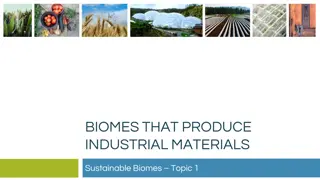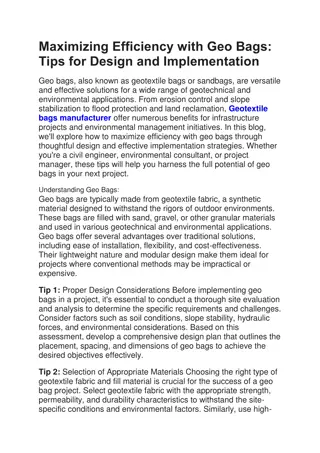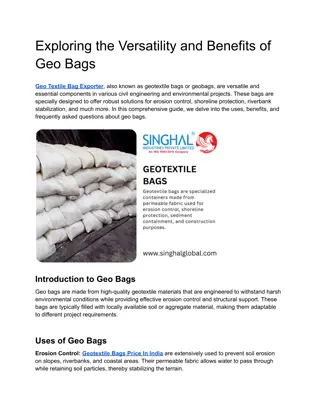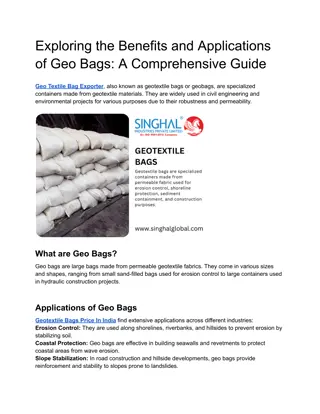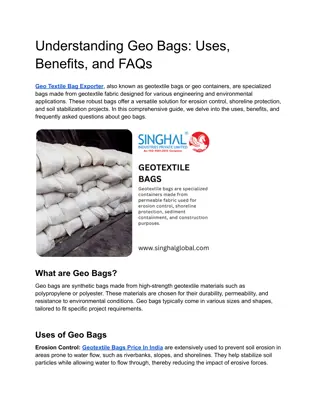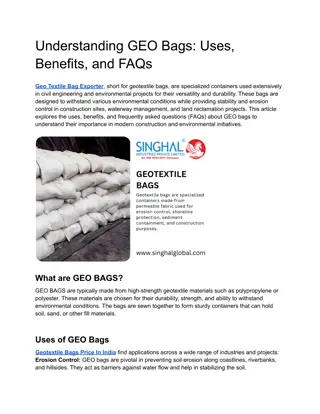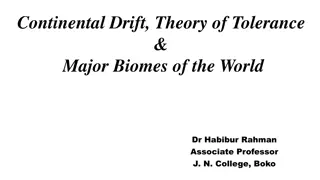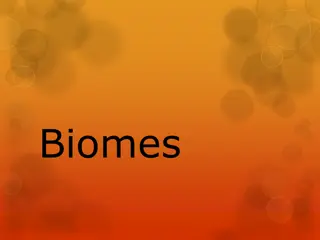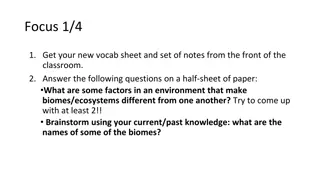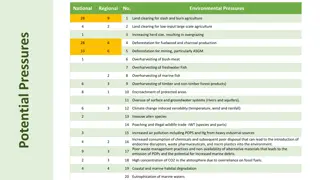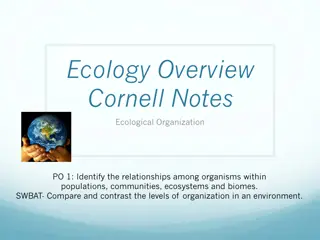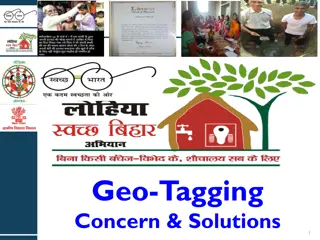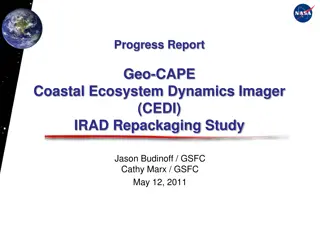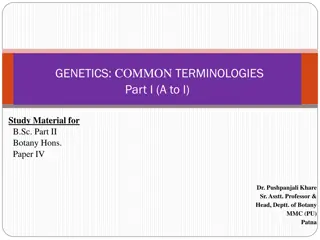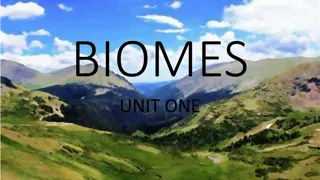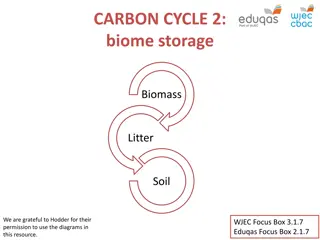
Tropical Rainforest Biome: Biodiversity and Ecosystem Overview
Explore the lush Tropical Rainforest Biome, a vital carbon sink known for its abundant moisture and heat. Learn about the diverse vegetation, including trees, climbers, and epiphytes, as well as the vertical stratification that characterizes this unique ecosystem. Discover the rich biodiversity and unique features of this biome, from the Amazon Basin to Malaysia.
Download Presentation

Please find below an Image/Link to download the presentation.
The content on the website is provided AS IS for your information and personal use only. It may not be sold, licensed, or shared on other websites without obtaining consent from the author. If you encounter any issues during the download, it is possible that the publisher has removed the file from their server.
You are allowed to download the files provided on this website for personal or commercial use, subject to the condition that they are used lawfully. All files are the property of their respective owners.
The content on the website is provided AS IS for your information and personal use only. It may not be sold, licensed, or shared on other websites without obtaining consent from the author.
E N D
Presentation Transcript
TROPICAL RAINFOREST BIOME SEMESTER VI (HONS.) DSE-4 Dr. Sujata Das Deptt. Of Geography Hooghly Women s College
TROPICAL RAINFOREST BIOME Carbon sink Optimum Biome abundant moisture, water & heat 100N to 100S Location Amazon Basin, Congo Basin, Java, Sumatra, Borneo, Malaysia & Sumatra Climate Average rainfall 200cm or more, convectional in nature Mean annual temp 200c; annual range 100c; daily range 500c to 100c
Vegetation * Trees account for 70% of the total plant species of the tropical rainforest biome * Climbers/ creepers (P.W. Richards 1952)are divided into;- # climbers of the lower strata include herbaceous plants # long woody climbers/ Lianas are found from ground to the uppermost stratum of the forest canopy, have thick woody stems(20cm or more in diameter), long lengths (upto 240 m or more) & large crowns
* ephiphytes which do not have roots on the ground & are found on trunks, stems, branches &leaves of trees, shrubs, herbs, climbers etc. Ephiphytes (morphology) a) Holo Ephiphytes; roots never reach the ground b) Hemi Ephiphytes: evolved over branches, trunks & stems of trees & grow upwards but their roots reach the ground surface c) Pseudo Ephiphytes; evolved over the ground & grow upward, then their roots disappear but their upper parts are maintained d) Semi Parasite Ephiphytes; get their food from other autotrophic plants (S.A. Cain & G.M. de Oliveiro Castro 1959) Ephiphytes (forms) a) Macro Ephiphytes includes ferns b) Micro Ephiphytes includes moss, lichens, algae etc.
Vertical Stratification *1ST/ Top Layer Stratum- looks like an umbrella but the level of the top surface is discontinuous & wavy; receives max amount of sunlight & intercepts rain drops, height is 30m to 60m, dominant layer * 2ndLayer Stratum- upper crown is mop shaped, touches each other; height is 25m to 30m, co-dominant layer or second dominant layer * 3rdLayer- trees have large leaves than first two layers as they trap more sunlight ; height is 15m to 20m * 4thLayer- shrub layer; discontinuous, height is 5m or less from ground * 5thLayer- herbaceous plants & ferns; height is 1m to 2m
Animal Life J.L. Harison (1962) has divided animal life as follows; * Upper Air Animal Community- insectivorous birds & bats like Asian falconet, Swifts, Seviflet etc. * Main Canopy Animal Community- birds & fruits bats like Toucans, parakeets, Barbets, Cotingas, Currasows, Bill birds etc. * Middle Zone Flying Animal Community- animals have climbing mechanisms & belong to carnivorous & herbivorous categories like Squirrels, Civets etc. * Large Ground Animal Community- some birds but mostly animals like Mouse Deer, Cassowaries, Elephants etc. * Small Ground Animal Community includes small animals & micro-organisms, mostly insectivorous like Argus Pheasant, Peacock, Guinea Fowl etc.
Anthropogenic Impact Destruction of rainforest mining activity for precious metals like gold, silver; fossil fuels industrial activity agricultural activity Construction of dams & reservoirs Extinction of species Protection Preservation of habitat Sustainable management techniques International policy > market incentive programme REDD (Reducing Emissions from Deforestation & Forest Degradation) for companies & govts to outset their carbon emissions through financial investments into rainforest conservation

